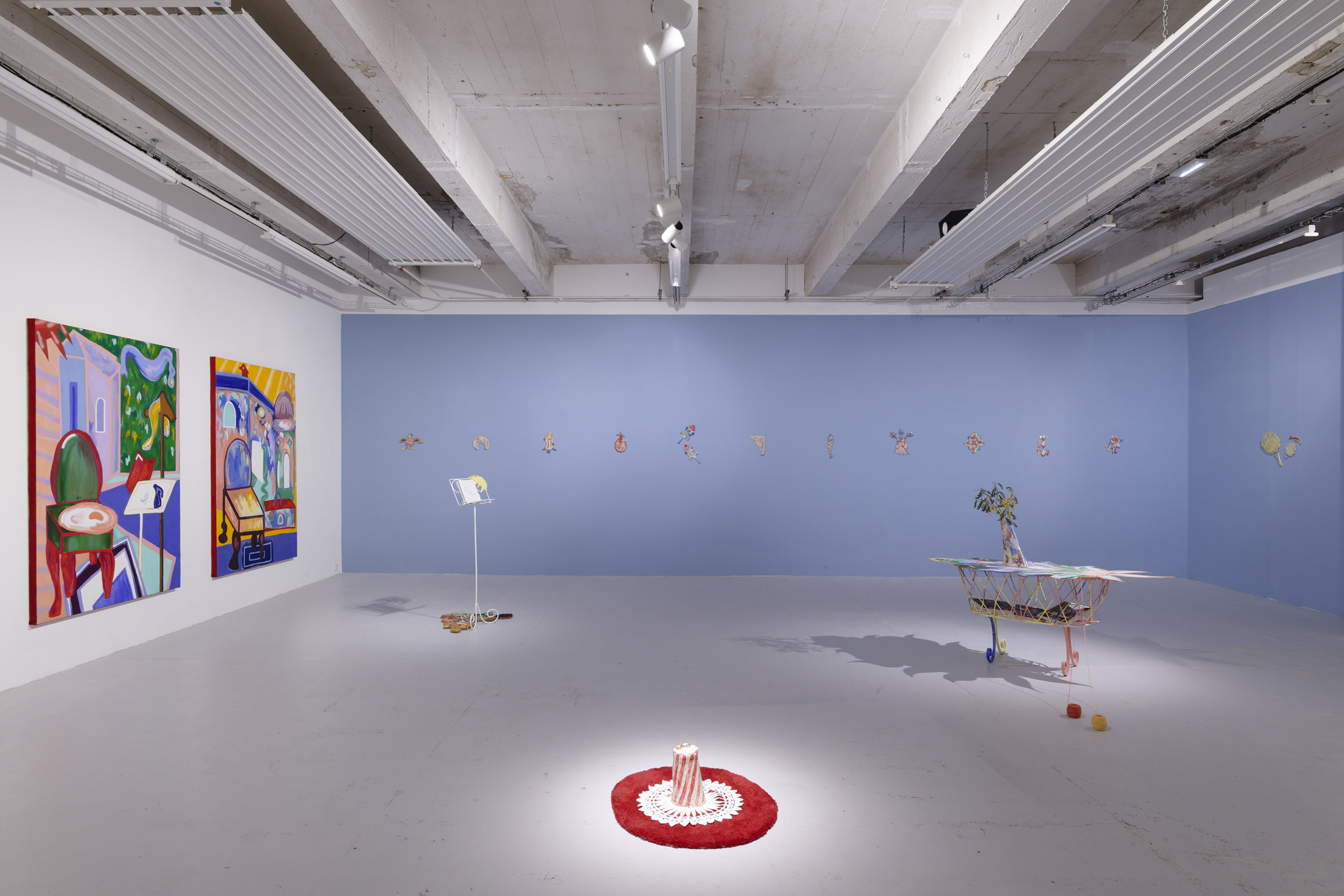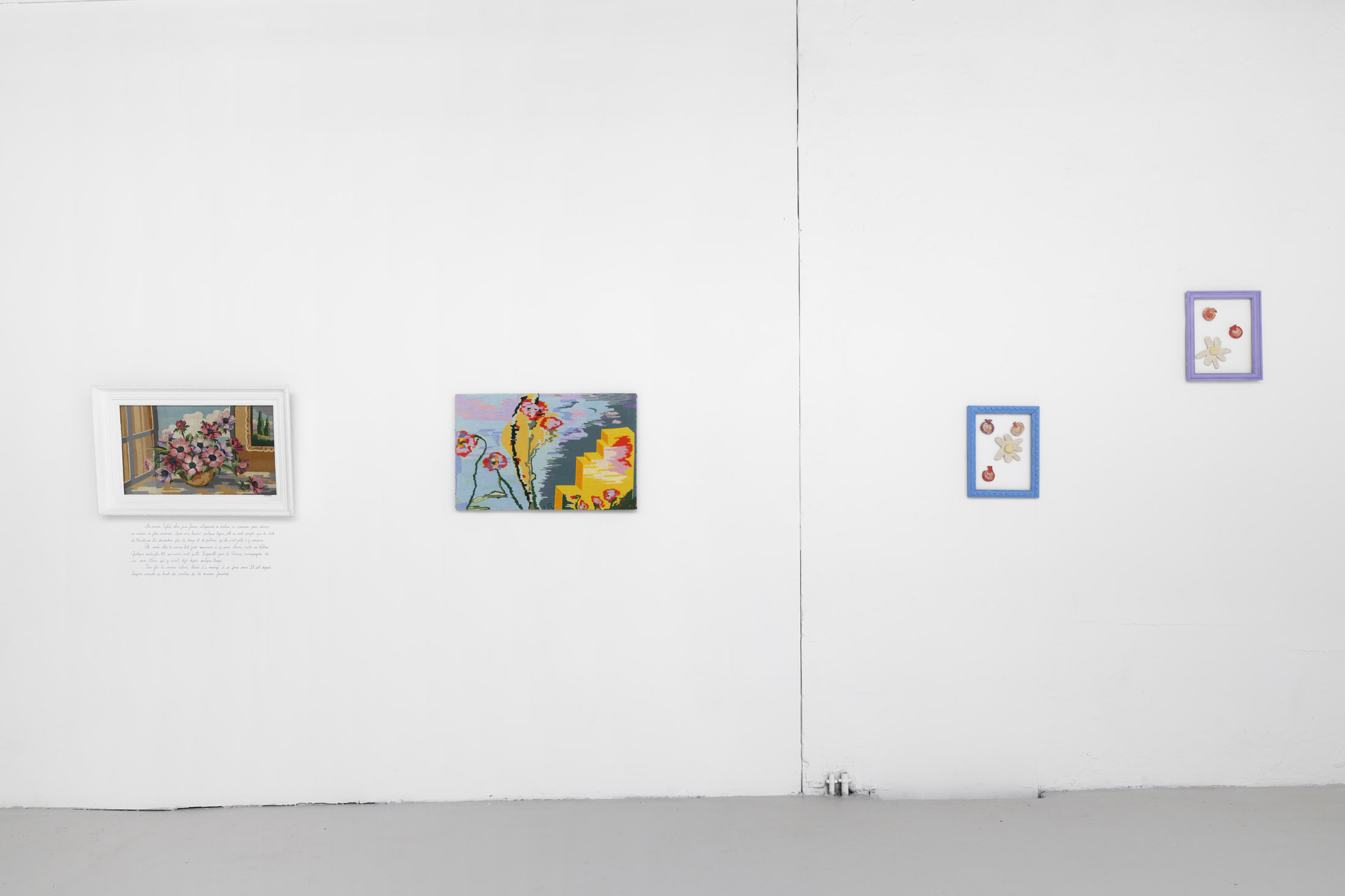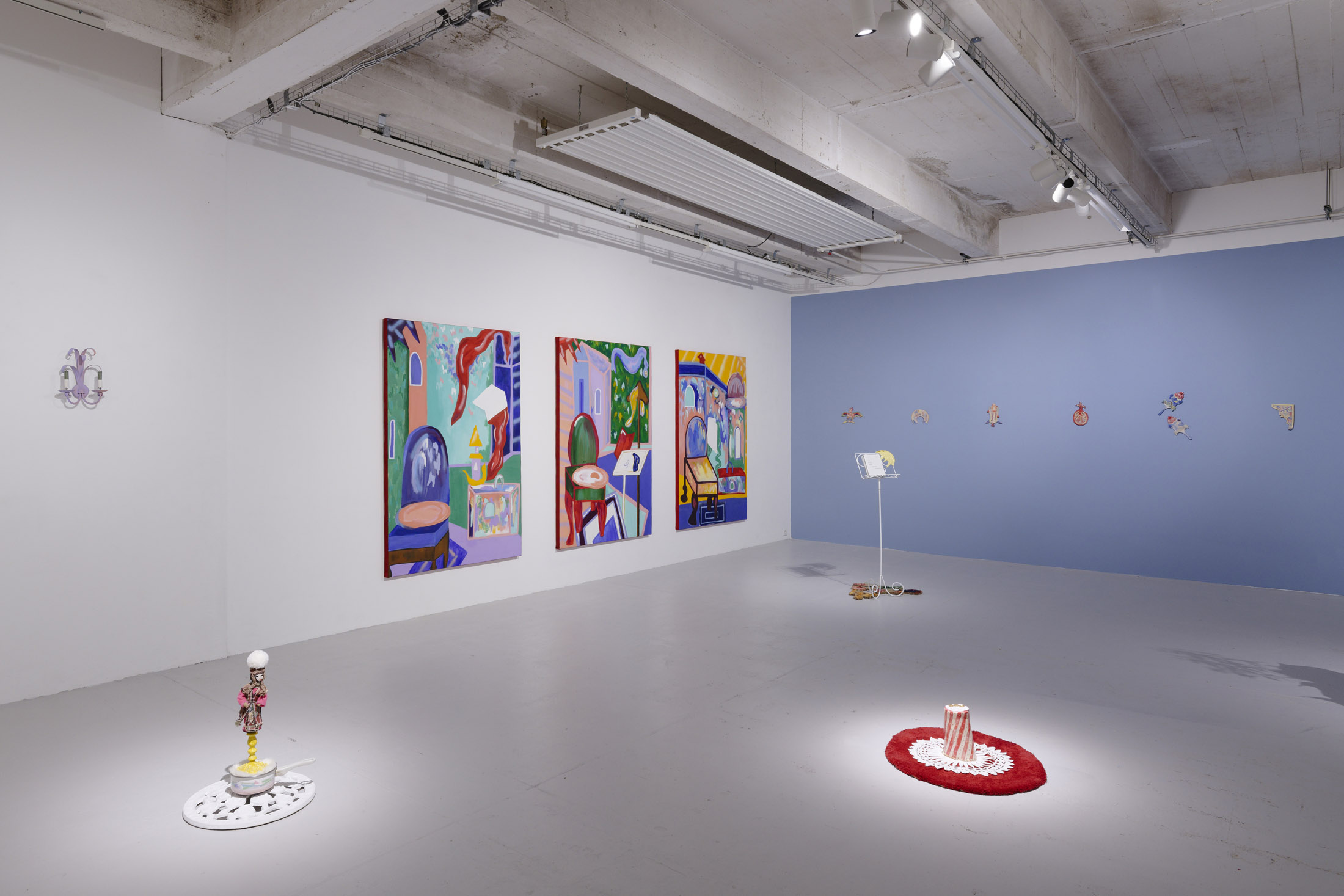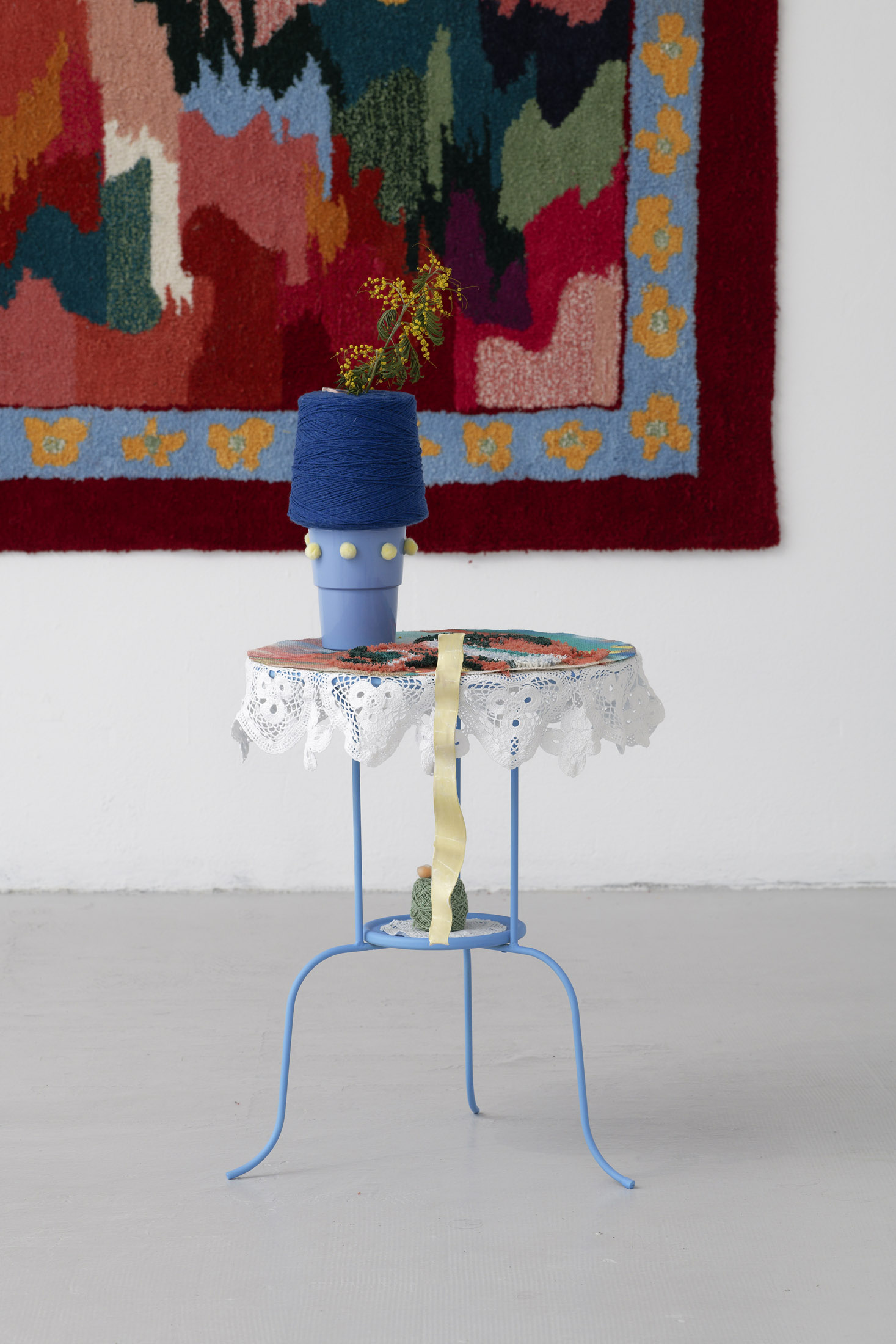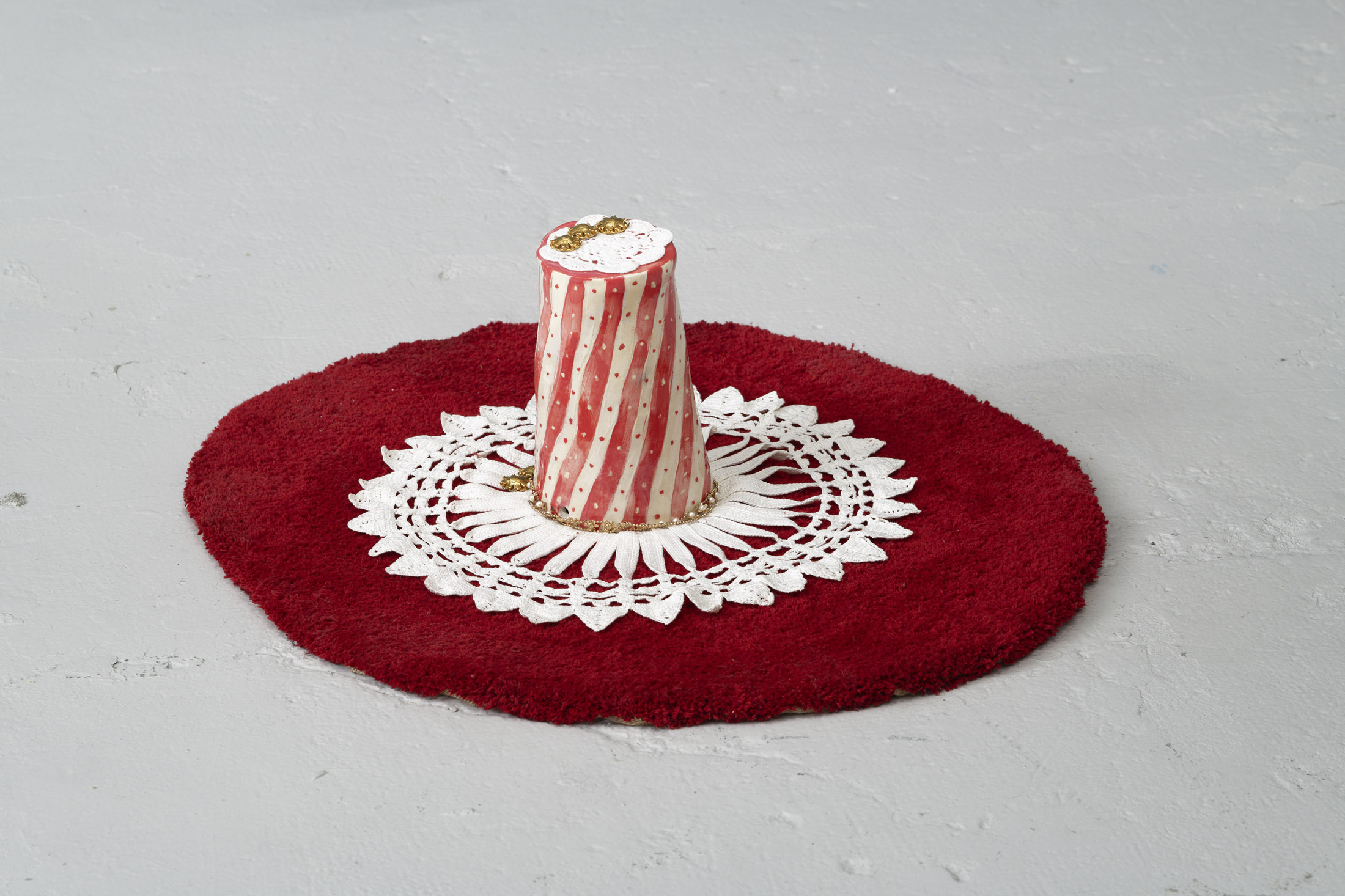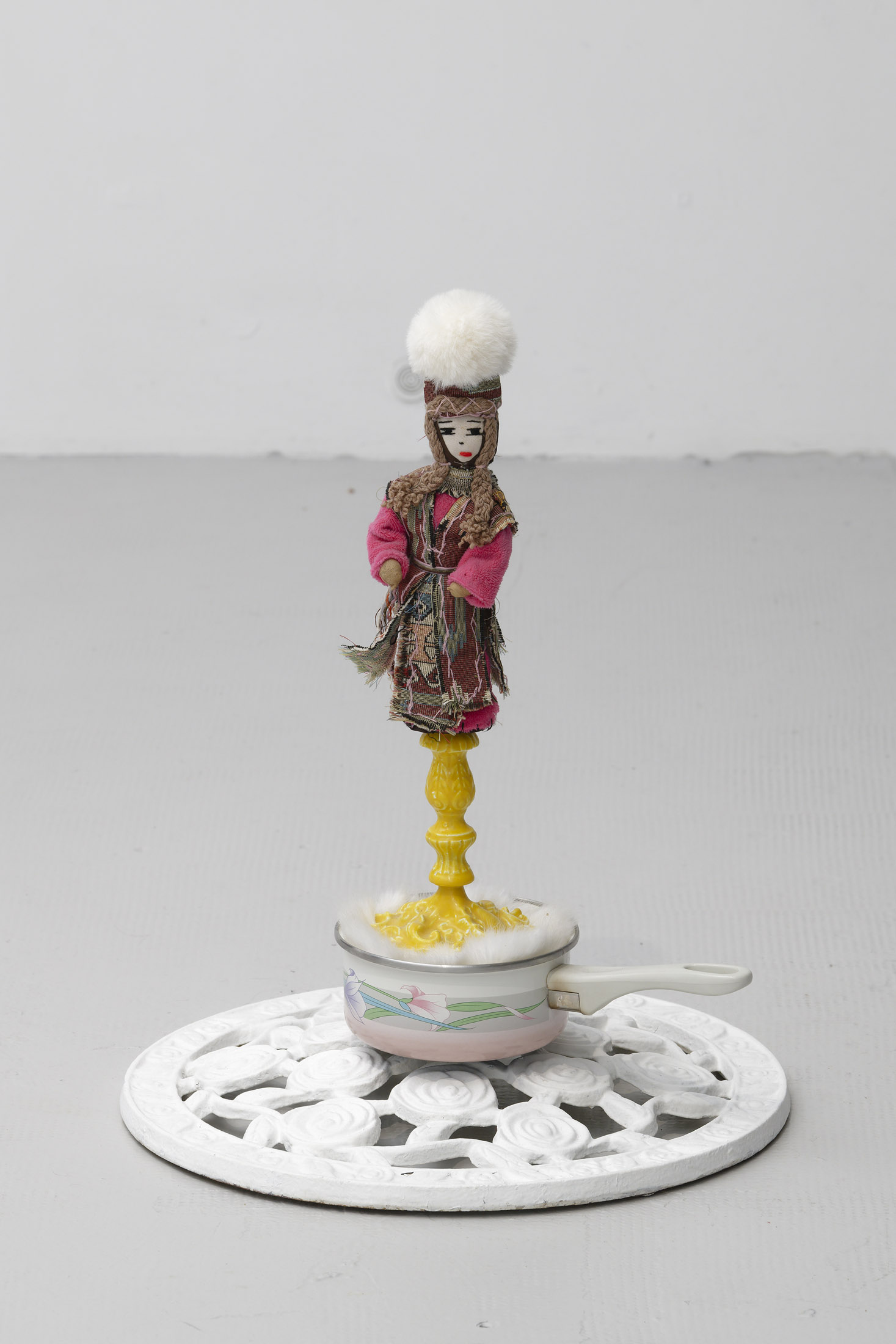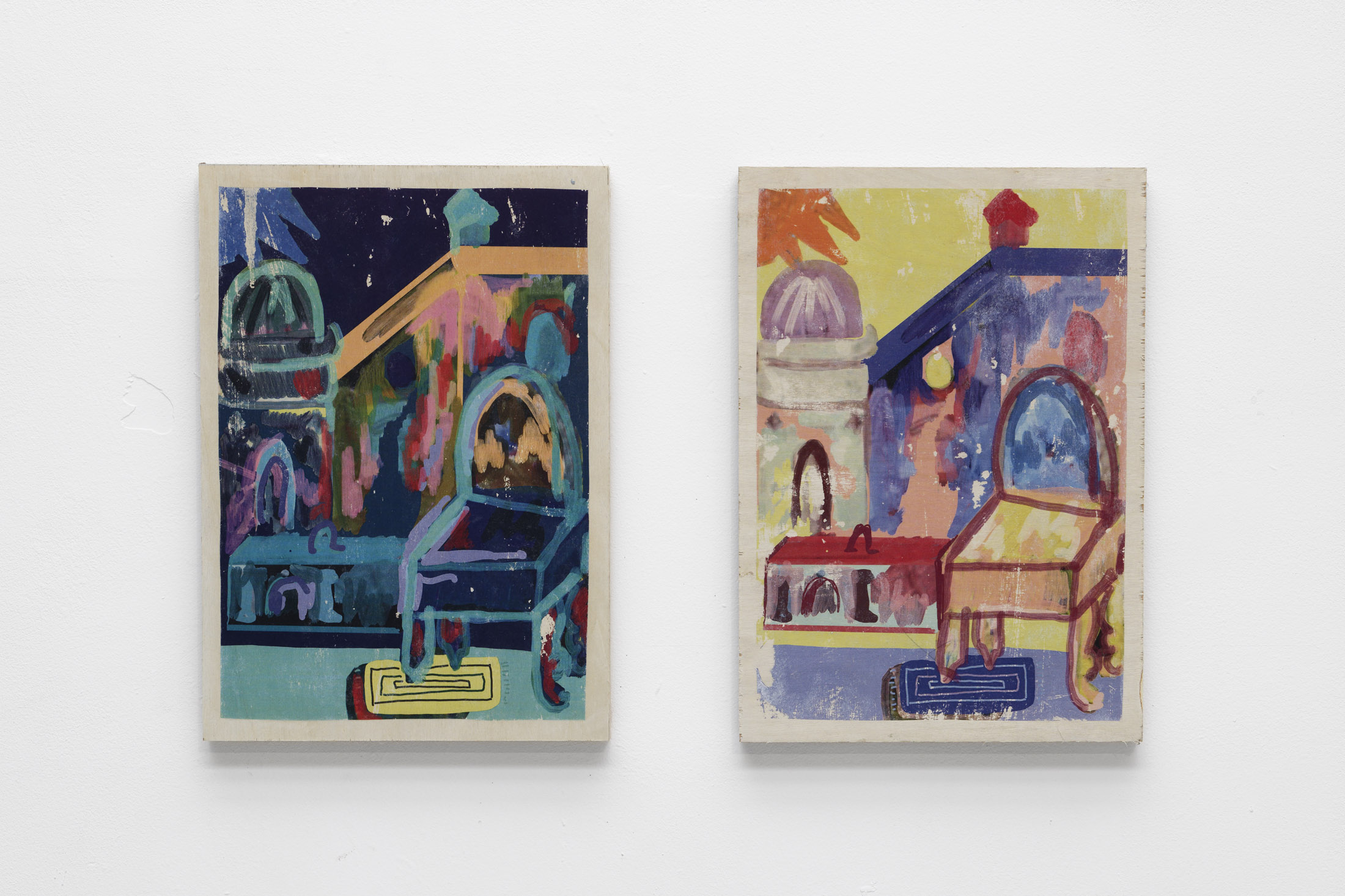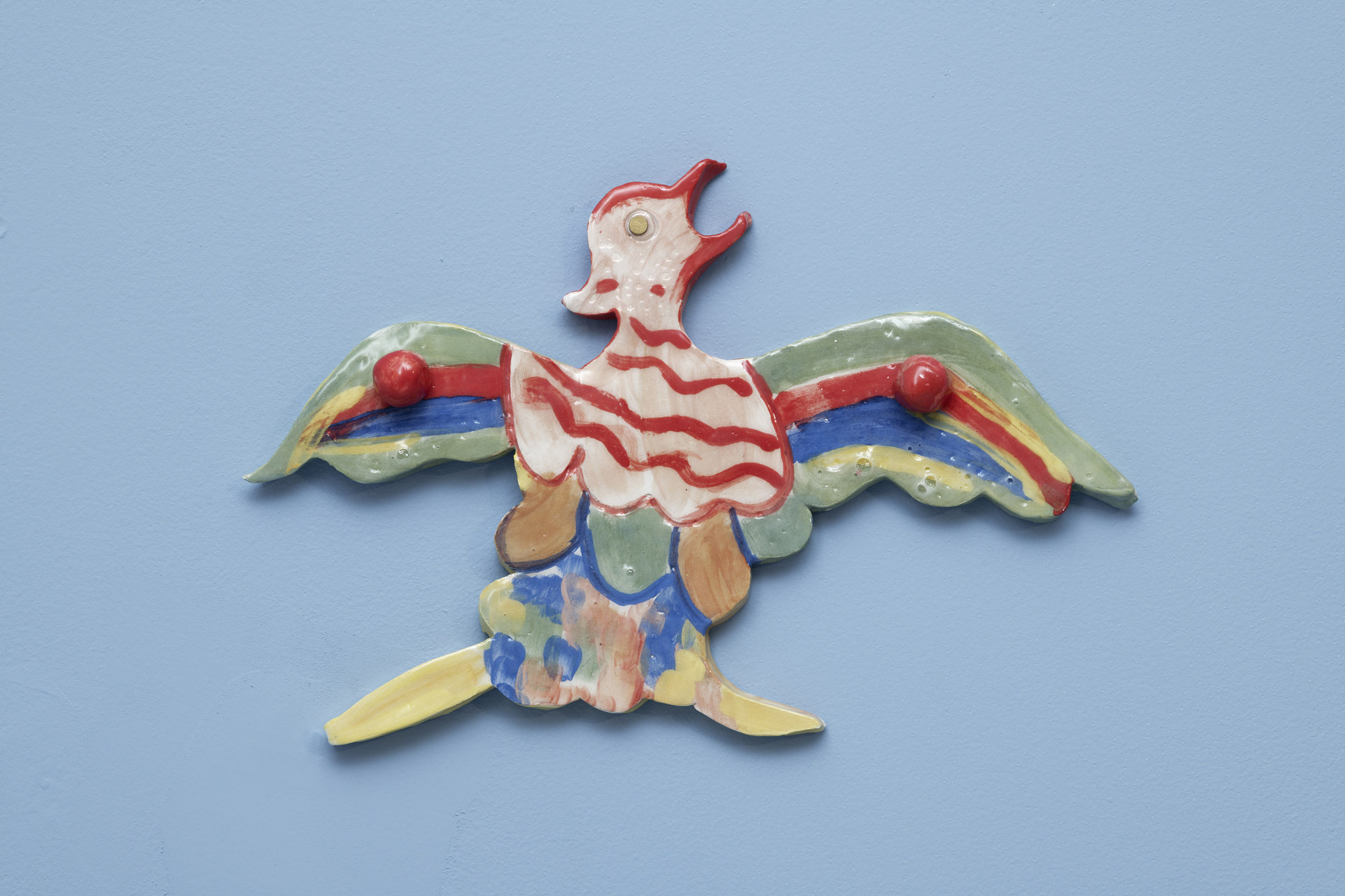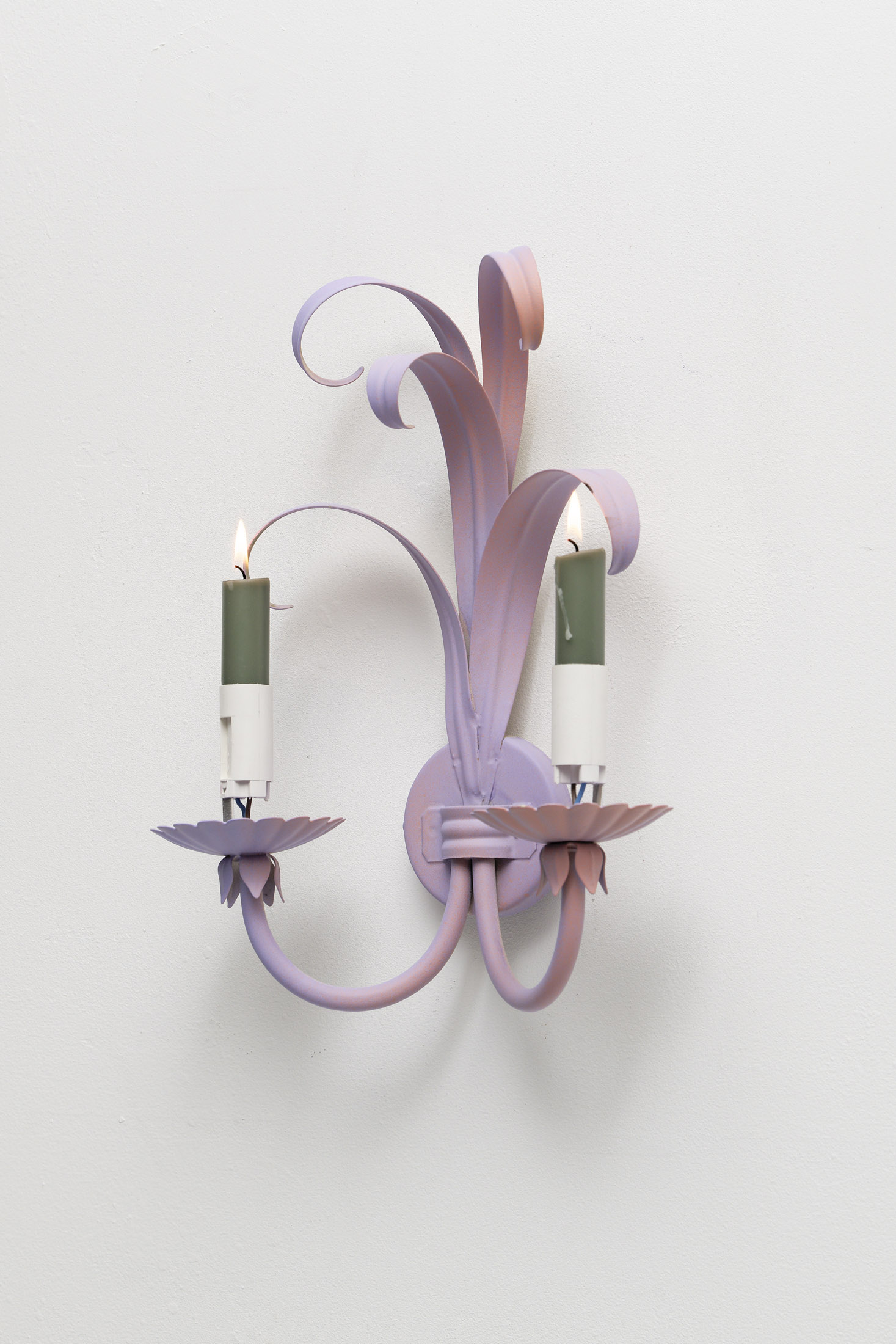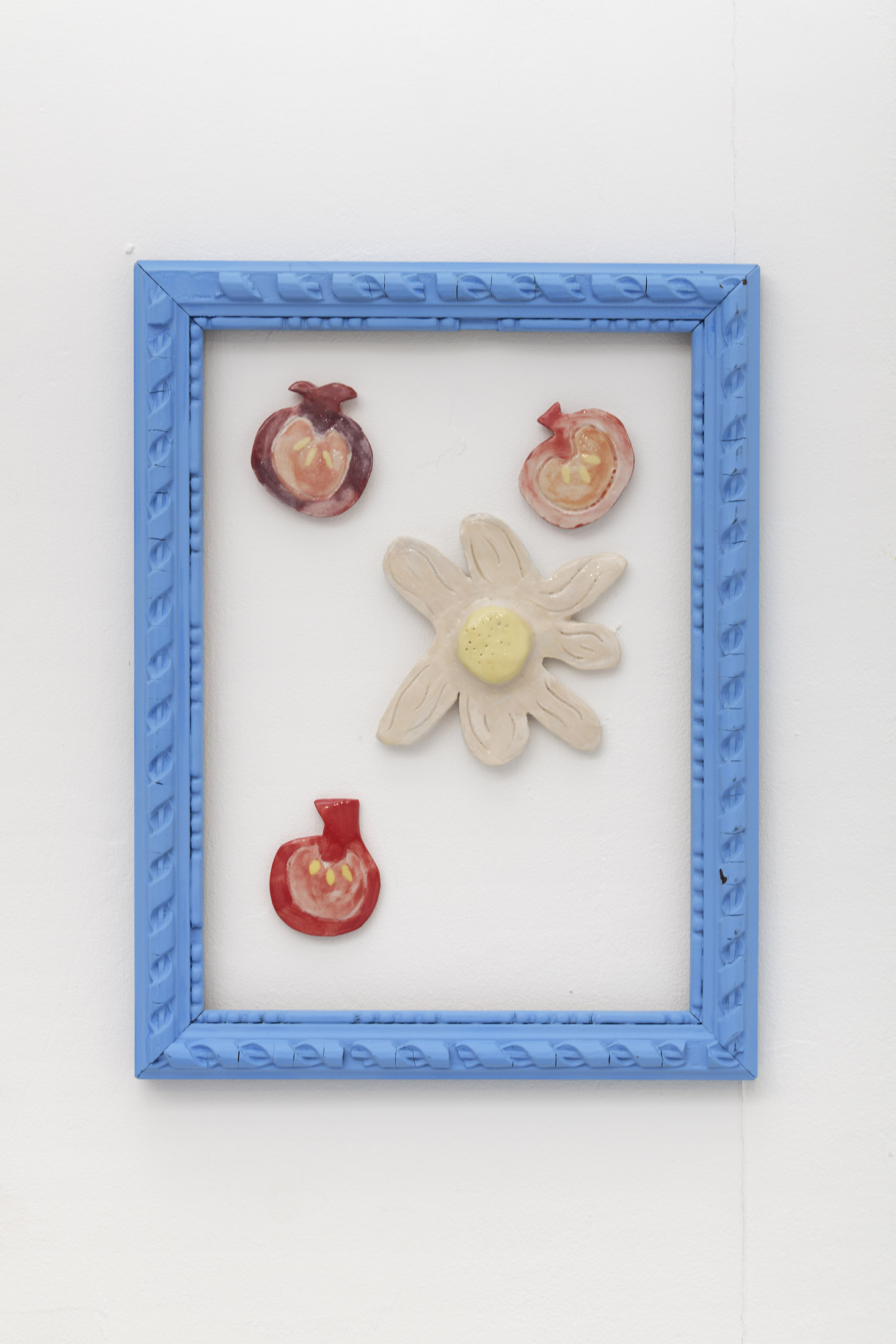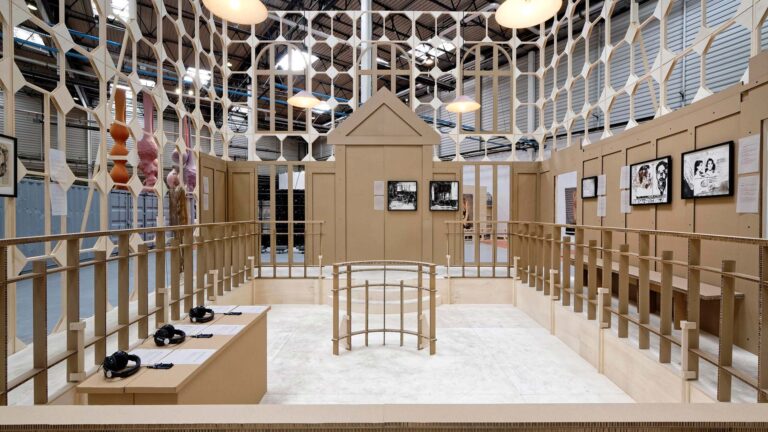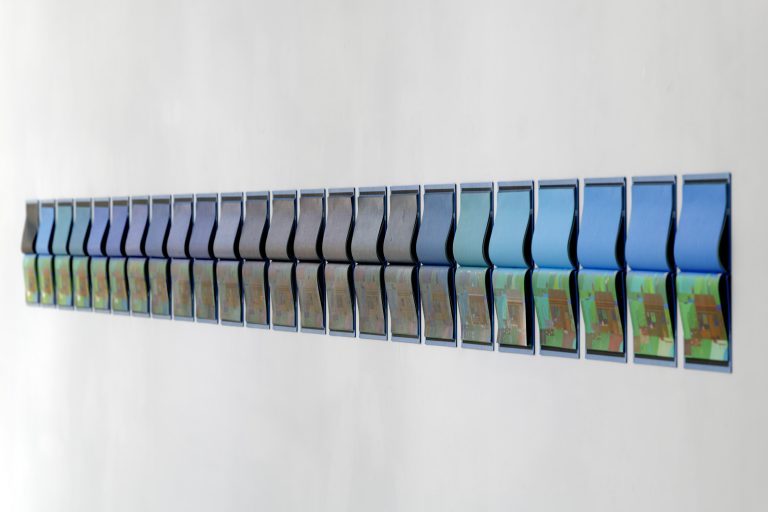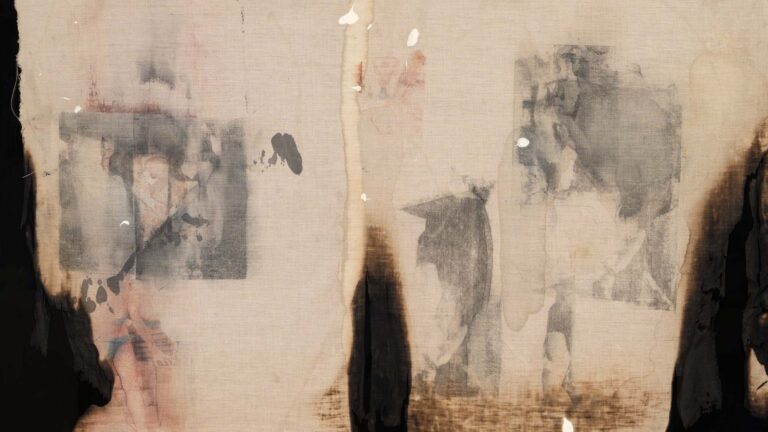Artist: Emma Seferian
Exhibition title: Amours, marguerites et troubadours
Venue: Passerelle Centre d’art contemporain, Brest, France
Date: February 17 – May 20, 2023
Photography: ©Aurélien Mole / all images copyright and courtesy of the artist and Passerelle Centre d’art contemporain
This exhibition is the fruit of our workshop residencies, our annual research and production programme which invites a visual artist to come to Brittany and spend three months working in the art centre’s workshops. This residency is held in conjunction with Documents d’Artistes Bretagne, an association that promotes and disseminates works by artists from our region. It also provides the artist with the critical and technical support they need to produce exceptional works.
The atmosphere into which Emma Seferian welcomes the visitor is glowing, kindly and joyful. The title itself is gentle, Love, daisies and troubadours, evoking the last episode of the first season of the television series Gilmore Girls which tells the story of a single mother’s relationship with her daughter. This single parent family unit and the issue of the emancipation of parents are what particularly attracted the artist to this feel-good series, adding a light-hearted mood. The rather vague words of the title act as clues to the interests of Emma Seferian. The love of friends, lovers and family is at the heart of this exhibition, as are issues of art dubbed ‘decorative’ and music as a means of communication.
On the one hand, Emma Seferian challenges the notion of cultural heritage, especially the matriarchal heritage. She uses the skills and techniques allotted to women, including needlepoint, tapestry and embroidery, questioning their use and history. Whereas this type of work used to be utilitarian and functional, making hard-wearing clothes and furnishings, now these activities have become transformed into creative leisure or even fashion. We are therefore witnessing a cultural appropriation by the wealthier classes of traditional working-class expertise. This phenomenon is continuous and affects every field of activity. It is not new – the dominant classes always take over codes, symbols and history for their own economic and communication needs. On the other hand, Emma Seferian mishandles the functions of objects and modifies the characteristics attributed to them: a carpet becomes a mural, mottled objects incorporate works of art while rustic wrought iron gains in lightness and elegance. By collecting these rebus puzzles and everyday objects, she attempts to treat art as a close friend who belongs to her while aiming at the universal.
It is no coincidence that the decorations and techniques used by Emma Seferian are related to her personal story. She is particularly inspired by the traditional art of Armenia, a country at a crossroads, nurtured by Persian, Asian and Western influences, and the land of her family origins. She has observed and studied the illuminated manuscripts of the fifteenth century and later, produced by Armenian monasteries, taking details from the paintings and including them in her own paintings, textiles and assemblages. She was particularly struck by some Christian images of the Renaissance, such as the representations of Saint Matthew busy writing in urban landscapes that are often confused, with perspectives that have gone awry, mixing Interiors and exteriors. Emma Seferian takes these scenes and removes the person, creating a series of three strange yet warm paintings in which the empty décor becomes the work’s only subject. Religion is symbolically replaced by intimacy, with a sensation of well-being and calm. Because one of the artist’s great objectives is found in this search for the feelings of comfort and pleasure one can find in works of art.
The soundtrack played in the exhibition recalls the word ‘troubadour’ of the title and the relation to music – Emma Seferian is also a DJ – and above all reinforces this quest for fulfilment.


